Hints & Tips
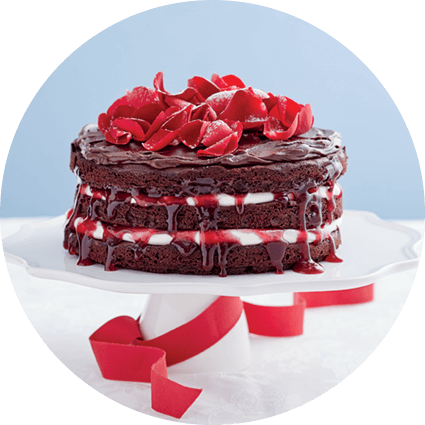
Cakes
Testing cakes – use a skewer to test cakes. Push the skewer gently through the thickest part of the cake, to the bottom of the tin. Remove the skewer slowly-if the skewer is clean the cake is done; if the skewer has uncooked mixture on it, cook the cake further. For sponges, press the top of the cake lightly, if cake springs back quickly, it is cooked.
Greasing and flouring tins – cake tins need greasing to prevent the mixture from sticking to the tin. Even non-stick surfaces need a light greasing. Use cooking-oil spray, or melted butter or margarine.
Cake tin size – check the size of your tin by measuring the diameter or width and length of the base (not the top). It’s important to use the tin size specified in the recipe, or at least one of the same cup capacity-check by measuring with water.
Marbling – to achieve a marbled effect in a cake, dollop the various coloured mixtures into the cake pan, then pull a skewer through the mixtures. The same technique can be used to get marbled icing.
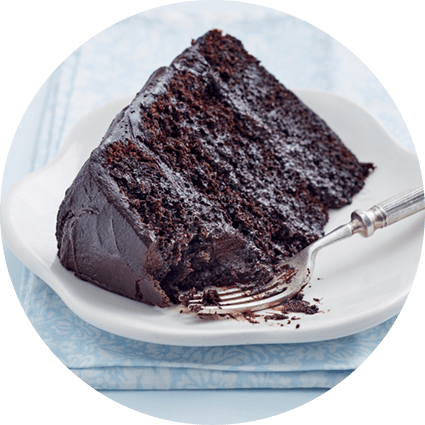
Measuring dry and wet ingredients – if you get into the habit of measuring dry ingredients before you measure liquid ingredients, you will not have to wash and dry your measures before you finish measuring.
The right size tin – cake mixture should only fill 2/3 tin, allowing it room to rise.
Leftover cake mix can be used to make muffins – fill muffin holes one-half to two-thirds full. Bake in a preheated oven at the same temperature called for in your cake recipe, reducing baking time by a third to a half.
Don’t open the oven door or disturb the cake until it has finished rising and is partially browned, or your cake may sink.
Your cake is done if it’s “springy” – when your cake is done, the top will spring back when pressed lightly in the centre and slightly shrink away from the sides of the pan. Try inserting a skewer or wooden toothpick in the centre. If it comes out clean, it’s done.
- Your cake may have tunnels and cracks
- Your cake may set before it fully rises and may be uneven
- Your crust may be too dark
- Your crust may burst or crack
- Your cake may have coarse, dense or heavy texture
- Your cake wont set fast enough and will fall
- Your crust may be too light
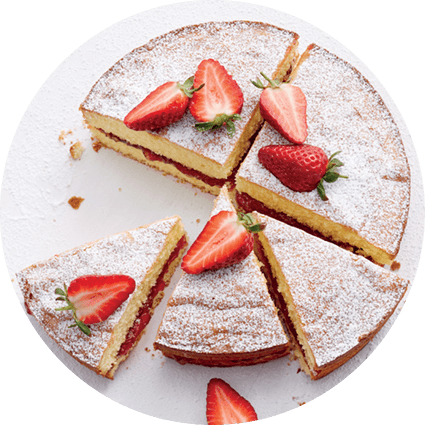
Lining Cake Tins
- Lining square cake tins – (If the cake tin has round corners follow the instructions for lining a round). If the cake tin has sharp corners, line cake tins by cutting strips of paper the width of the tin and long enough to go over two sides and the base, hanging out about 5cm from both the sides. Do the same for the opposite direction.
- Lining round cake tins – Cut strips of brown paper or greaseproof paper about 10cm wider than the depth of the cake tin. Fold over the long edge of the paper about 2.5cm. Cut this 2.5cm strip up to the fold line about every 2.5cm. This will enable the paper to fit around the curve of the cake tin. Use the base of the cake tin draw out circles of paper, place inside the tin on the base.
- Remove the lining from the cake before it goes cold.
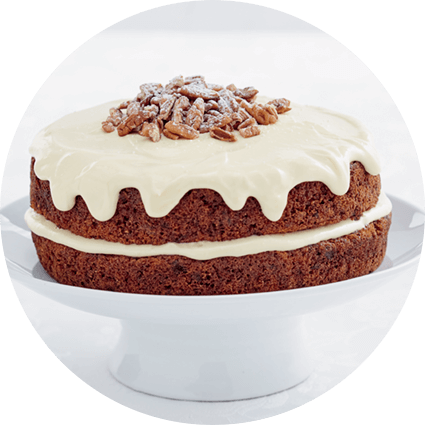
When creaming butter and sugar add a TBSP of hot water to the mix, it gives you a fluffier mix faster.
Before putting a fruit cake in the oven, wet the back of your hand under the cold tap and pat gently over the cake surface.
When baking cakes, cupcakes or muffins always check them with a skewer in the middle at the minimum baking time to avoid overcooking or burning. (The skewer should come out clean if the cake is cooked in the middle).
Create brown/ripe bananas quickly, put them in the freezer until brown.
When adding sutanas, nuts or other fruit to a mix, always drop them in the flour first and shake around. Coating these items in flour will ensure an even spread through the batter instead of clumping or sinking.
Always make sure you have dried off your fruit or roll in castor sugar or flour before you place the sponge cake on top of them, as this will help the fruit to attached to the mixture.
Add coffee granules to date loaf – it gives a lovely flavour to the loaf.
When baking cakes put ice in the oven to keep the crust of the cake moist and to stop it from cooking faster then the middle of the cake.


Measuring dry and wet ingredients – if you get into the habit of measuring dry ingredients before you measure liquid ingredients, you will not have to wash and dry your measures before you finish measuring.
The right size tin – cake mixture should only fill 2/3 tin, allowing it room to rise.
Leftover cake mix can be used to make muffins – fill muffin holes one-half to two-thirds full. Bake in a preheated oven at the same temperature called for in your cake recipe, reducing baking time by a third to a half.
Don’t open the oven door or disturb the cake until it has finished rising and is partially browned, or your cake may sink.
Your cake is done if it’s “springy” – when your cake is done, the top will spring back when pressed lightly in the centre and slightly shrink away from the sides of the pan. Try inserting a skewer or wooden toothpick in the centre. If it comes out clean, it’s done.
- Your cake may have tunnels and cracks
- Your cake may set before it fully rises and may be uneven
- Your crust may be too dark
- Your crust may burst or crack
- Your cake may have coarse, dense or heavy texture
- Your cake wont set fast enough and will fall
- Your crust may be too light

Lining Cake Tins
- Lining square cake tins – (If the cake tin has round corners follow the instructions for lining a round). If the cake tin has sharp corners, line cake tins by cutting strips of paper the width of the tin and long enough to go over two sides and the base, hanging out about 5cm from both the sides. Do the same for the opposite direction.
- Lining round cake tins – Cut strips of brown paper or greaseproof paper about 10cm wider than the depth of the cake tin. Fold over the long edge of the paper about 2.5cm. Cut this 2.5cm strip up to the fold line about every 2.5cm. This will enable the paper to fit around the curve of the cake tin. Use the base of the cake tin draw out circles of paper, place inside the tin on the base.
- Remove the lining from the cake before it goes cold.

When creaming butter and sugar add a TBSP of hot water to the mix, it gives you a fluffier mix faster.
Before putting a fruit cake in the oven, wet the back of your hand under the cold tap and pat gently over the cake surface.
When baking cakes, cupcakes or muffins always check them with a skewer in the middle at the minimum baking time to avoid overcooking or burning. (The skewer should come out clean if the cake is cooked in the middle).
Create brown/ripe bananas quickly, put them in the freezer until brown.
When adding sutanas, nuts or other fruit to a mix, always drop them in the flour first and shake around. Coating these items in flour will ensure an even spread through the batter instead of clumping or sinking.
Always make sure you have dried off your fruit or roll in castor sugar or flour before you place the sponge cake on top of them, as this will help the fruit to attached to the mixture.
Add coffee granules to date loaf – it gives a lovely flavour to the loaf.
When baking cakes put ice in the oven to keep the crust of the cake moist and to stop it from cooking faster then the middle of the cake.
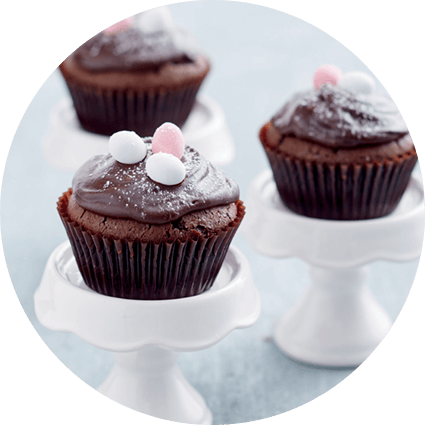
Cupcakes and Muffins
When using berries in your muffins, mix them with a few spoonfuls of the mixed dry ingredients before mixing in together. This coats the berries and prevents them from all sinking to the bottom of the muffin.
Tin Sizes
- Patty tins are shallow, muffin tins are deep.
- Regular sized muffins – the standard muffin size, slightly larger than cupcakes and are much deeper.
- Mini muffins – are a little less than half the size of regular-sized muffins. A mixture that makes 12 regular muffins will make 24-30 mini muffins. Mini muffins usually need about 2 minutes shorter baking time than regular muffins.
- Texas muffins – are twice the size of regular muffins. These large muffins are made in trays of six. These muffins usually take 2-4 minutes longer than regular muffins.
Muffins are cooked – as soon as centres spring back when pressed.
Muffins should come out cleanly if cooled in pans for 3-4 minutes before removal.
Your cake is done if it’s “springy” – when your cake is done, the top will spring back when pressed lightly in the centre and slightly shrink away from the sides of the pan. Try inserting a skewer or wooden toothpick in the centre. If it comes out clean, it’s done.
Paper cases – can be used to line cupcake or muffin tins for easy removal and can enhance presentation.
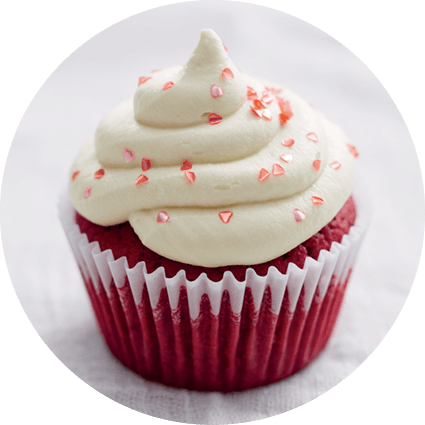
Mixing Ingredients for Muffins
- Too much flour makes dry muffins -never pack or press it into cup measures.
- Always mix dry ingredients thoroughly before adding liquid mixture.
- Mix all liquids together before adding them (all at once) to the dry mixture.
- Don’t over mix muffins -fold wet and dry mixtures together until just combined – mixture should not be smooth.
Paper cases – If your cupcakes are in paper cases remove them from the pan as soon as possible when they come out of the oven to cool on a wire rack. This helps stop the cake sticking to the case when you peel it off.


Mixing Ingredients for Muffins
- Too much flour makes dry muffins -never pack or press it into cup measures.
- Always mix dry ingredients thoroughly before adding liquid mixture.
- Mix all liquids together before adding them (all at once) to the dry mixture.
- Don’t over mix muffins -fold wet and dry mixtures together until just combined – mixture should not be smooth.
Paper cases – If your cupcakes are in paper cases remove them from the pan as soon as possible when they come out of the oven to cool on a wire rack. This helps stop the cake sticking to the case when you peel it off.
Ovens
Oven racks – position these before turning oven on.
Oven positions:
- Top of oven – for high temperature cooking and quick cooking
- Middle of oven – use for moderate temperature cooking
- Bottom of oven – use for low temperature and slow cooking
Slices
The right size tin – the tin size specified in the recipe should be used to ensure the slice is the correct height and cooks evenly.
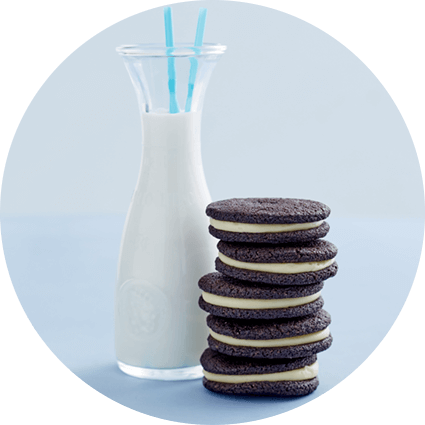
Biscuits
Always start baking biscuits with trays at room temperature. If your biscuit sheet is warm, your biscuit dough may melt and spread out.
Drop spoonfuls of dough 5cm apart so the biscuits don’t run together. Use a small ice cream scoop or spoon to “drop” your biscuits on the sheet so that the biscuits bake evenly and in the same shape. High-liquid batter spreads more than stiff dough.
If you’re pressed for time, mix ingredients, refrigerate, and bake later when family or friends arrive. There’s no better aroma than freshly baked biscuits!
For softer, chewier biscuits, bake just until they begin to brown.
Increase spread of biscuits with low oven temperature.
Decrease spread of biscuits with high oven temperature.
To bake more than one tray of biscuits at a time, rotate your trays about half way through the bake. Put the top tray on the bottom rack and the bottom tray on top. This will ensure biscuits are all cooked evenly, and similar in colour.
Lining cake tins
Greasing and flouring tins – cake tins need greasing to prevent the mixture from sticking to the tin. Even non-stick surfaces need a light greasing. Use cooking-oil spray, or melted butter or margarine.
Cake tin size – check the size of your tin by measuring the diameter or width and length of the base (not the top). It’s important to use the tin size specified in the recipe, or at least one of the same cup capacity – check by measuring with water.
Patty tins are shallow, muffin tins are deep.
Regular – sized muffins – the standard muffin size, slightly larger than cupcakes and are much deeper.
Mini muffins – are a little less than half the size of regular-sized muffins. A mixture that makes 12 regular muffins will make 24-30 mini muffins. Mini muffins usually need about 2 minutes shorter baking time than regular muffins.
Texas muffins – are twice the size of regular muffins. These large muffins are made in trays of six. These muffins usually take 2-4 minutes longer than regular muffins.
Lining square cake tins -(If the cake tin has round corners follow the instructions for lining a round). If the cake tin has sharp corners, line cake tins by cutting strips of paper the width of the tin and long enough to go over two sides and the base, hanging out about 5 cm from both the sides. Do the same for the opposite direction.
Lining round cake tins – Cut strips of brown paper or greaseproof paper about 10cm wider than the depth of the cake tin. Fold over the long edge of the paper about 2.5cm. Cut this 2.5cm strip up to the fold line about every 2.5cm. This will enable the paper to fit around the curve of the cake tin. Use the base of the cake tin draw out circles of paper, place inside the tin on the base.
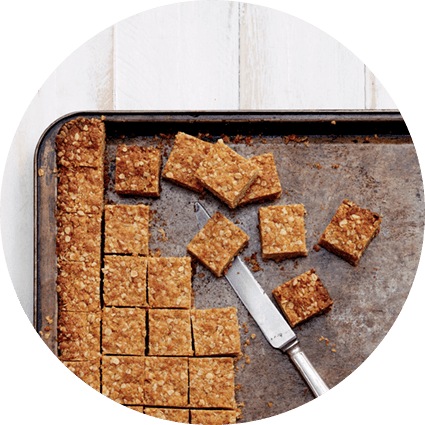
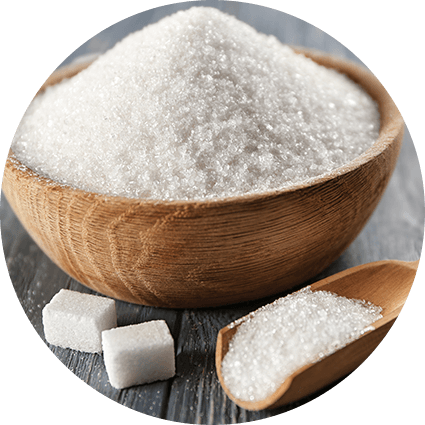
Sugar
Caster sugar crystals are smaller in size than white sugar crystals. Caster sugar dissolves easily for extra light meringues, puddings and cake mixes and is the preferred sugar for best baking results such as sponges and cupcakes.
White sugar can also be used in most baking and cooking (unless fine Caster is required).
Raw sugar can usually be substituted for white sugar, it works best on recipes where there is a longer cooking time (allows the crystals to dissolve).
When Brown Sugar goes hard!
Brown Sugar has a coating of molasses and is slightly ‘moist’ so it will go rock hard if it dries out, we recommend storing in an airtight container. If your brown sugar has gone hard here’s how you can soften it again: put a slice of apple or bread in the container with the sugar, the moisture from the apple/bread will be absorbed by the sugar and it will soften, you can also use a damp paper towel. The apple or bread wont go off, they will simply dry up.
Using the right ingredients
Plain or Standard flour – made from soft wheat varieties and has a low protein content.
It is used for making cakes and biscuits as it gives the baked product a tender texture.
High grade flour – made from semi-hard wheat and has a medium to high protein content. It is used for making bread.
Self-raising flour – made by combining flour with baking powder. These are sifted together many times until they are thoroughly combined and the baking powder is evenly distributed through the flour. This kind of flour is perfect for making pikelets and scones.
Wholemeal flour – contains all parts of the wheat grain. It is used in various baked products, including cakes, biscuits, slices, scones and muffins.
Eggs – eggs at room temperature will give a greater volume when beaten than those still cold from the fridge.
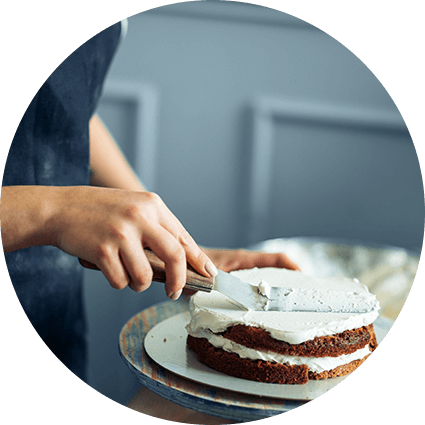
Icing
Buttercream Icing: When making buttercream icing using unsalted butter will make the icing sweeter and less buttery tasting. Salted butter highlights the butter flavour and reduces the perceived sweetness.
Piping Icing: A trick to make handling piping bags easier. Place the piping bag in a large glass or vase appropriate to the size of the bag. Fold the edges over the side of the glass to hold it in place while you fill it. This makes less mess and less ‘fingers and thumbs’ as it suports the bag, leaving both your hands free!
Lemon Icing: If you want a lemon tang to any icing, add lemon juice to it. It’s also really nice with some grated lemon rind added.
Instead of adding just vanilla essence to your chocolate icing, why not add a drop or 2 of Raspberry, Lemon or Peppermint, to make it, for instance, Raspberry Chocolate icing.
Don’t add lots of wet because you will end up adding lots of dry and you will make more icing then you intend to beat the butter really creamy before adding the icing sugar – it makes the icing even more creamy.